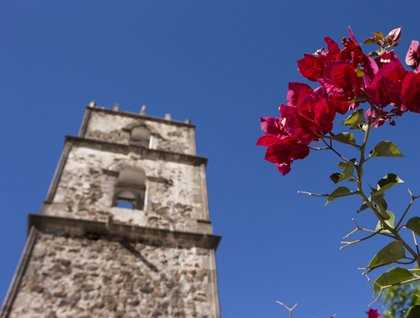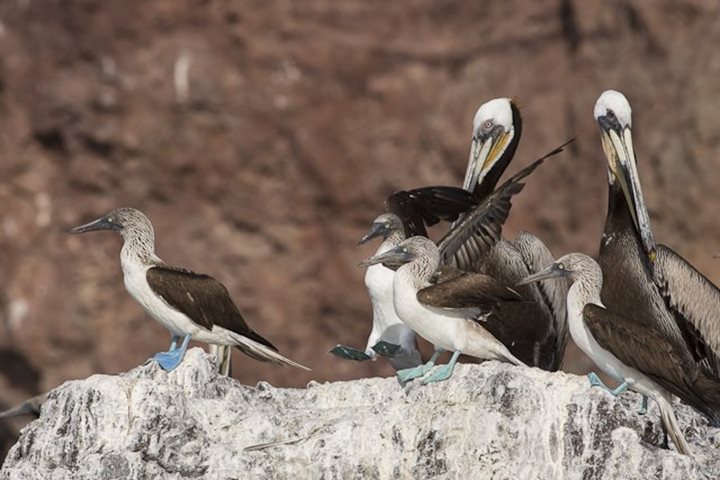The history of the colonization of the peninsula of Baja California by Europeans is a very interesting subject and today we got the chance to learn about it and visit some of the places that played key roles in it. Taking advantage of a windy day at sea, we disembarked at the well-protected Puerto Escondido, boarded vans, and headed towards the majestic La Giganta mountain range. For an hour and a half we enjoyed great views of a very lush desert, full of green leaves, thick cacti, and numerous freshwater streams. The abundant rains caused by several tropical storms and hurricane Manuel last year were clearly visible everywhere and made for a very pleasant ride. Our morning destination was the placid two-street town of San Javier, home of the second of the permanent missions built by the Jesuit missionaries. Founded in 1698 by father Piccolo, the San Javier mission is still an active church and is extremely well preserved. We explored the surroundings and enjoyed some bird watching among the numerous mango and orange trees, date palms, and olive trees that were very likely planted by the good old padres themselves.
After leaving San Javier, we headed back to the shores of the Sea of Cortez and visited the former capital of the Californias, the lovely town of Loreto. A peaceful place today, Loreto was at one time the capital of that huge territory that went from San Francisco, California down to Cabo San Lucas and is the site where father Salvatierra established the first of the permanent missions. This one is also very well preserved and an iconic figure in the peninsula. We also enjoyed a great lunch and the chance to get to know more of a real Mexican before heading back to our floating home and get ready to continue our explorations in beautiful Baja California.







